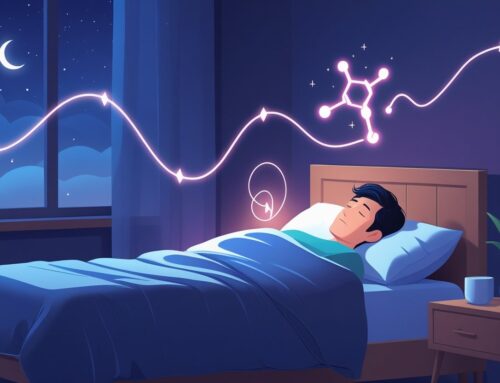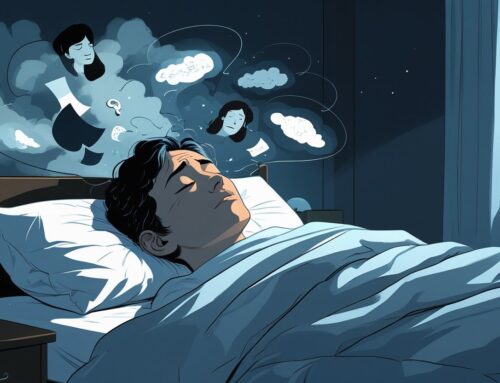Sleep isn’t only about a good mattress or pillow. The air in your room matters too, and humidity is often ignored. If the air is too dry or too damp, it can disturb your rest. Most people sleep best when humidity is around 40% to 50%. At this level, your body feels comfortable and breathing is easier. Too much humidity makes the room feel heavy and sticky, which can cause sweating. Too little moisture can dry out your skin, throat, or nose. Keeping a balance helps your body relax and lowers the chance of waking up from congestion, allergies, or overheating.
You don’t need fancy tools to manage it. A humidifier adds moisture, and a dehumidifier removes it. Staying in the right range helps you sleep more steadily. You’ll likely fall asleep faster and wake up feeling more refreshed.
Key Takeaways
- Comfortable sleep depends on steady humidity.
- Balanced air helps ease breathing and allergies.
- Humidifiers or dehumidifiers make it easier to manage your room’s air.
- The right mattress plus proper humidity keeps your bed fresh, protects its materials, and helps you sleep comfortably through the night.
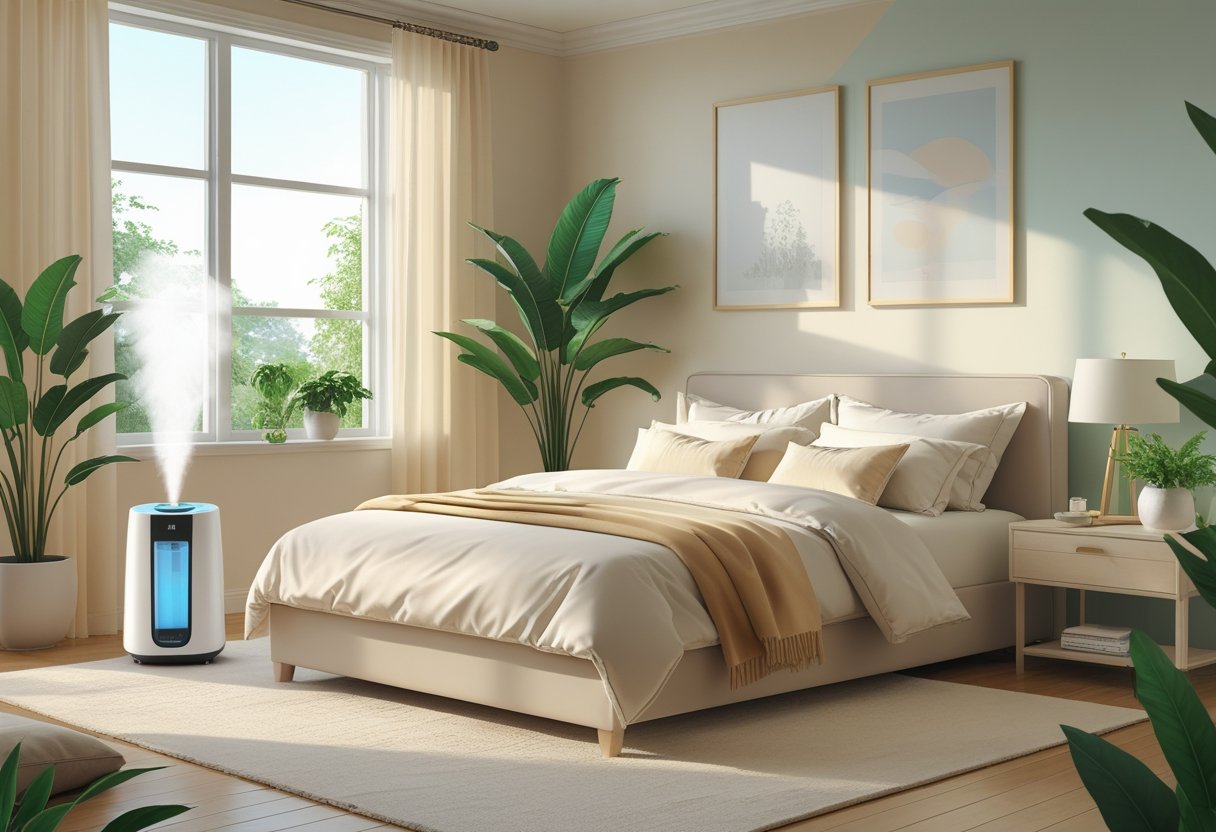
Ideal Humidity Levels for Sleep
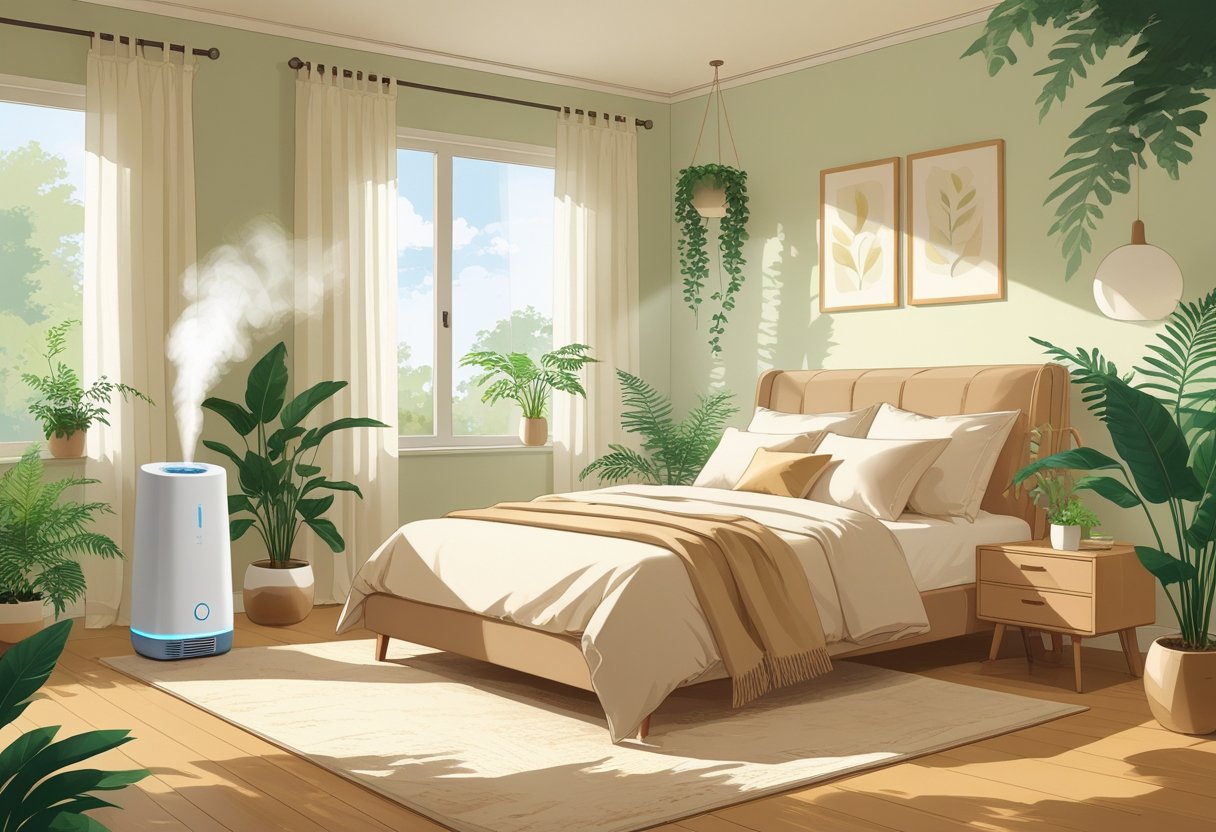
Most people don’t think much about humidity in the bedroom, but it can change how well you sleep. If the air is too dry, you might wake up with a sore throat, a stuffy nose, or itchy skin. If it’s too damp, the room feels heavy and uncomfortable. Both situations make it harder to rest. Along with keeping the temperature steady, managing humidity is one of the easiest ways to improve your sleep environment.
Optimal Humidity Range for Bedrooms
The ideal range is usually between 30% and 50%. In this zone, breathing feels easier, your eyes stay comfortable, and your skin doesn’t dry out. Below 30%, dryness sets in quickly. Above 50%, moisture can cause mold or attract dust mites, which trigger allergies and make the air harder to breathe. Many people use small humidifiers or dehumidifiers to keep things balanced. A simple device called a humidistat can also track the levels.
Recommended Humidity by Season
Humidity should change with the seasons. Winter air is often very dry because of heaters, so 30% to 40% usually feels best. Summer is more humid, so aiming for 40% to 50% keeps the room comfortable without feeling sticky. Air conditioners help, but in very humid areas, a dehumidifier can make a big difference.
Differences Between Sleep and Daytime Humidity
At night, your body reacts more to humidity than during the day. Breathing slows while you sleep, so air that is too dry or too heavy can disturb rest. Slightly lower humidity at night can prevent sweating and restlessness.
During the day, a little higher humidity is usually fine because you’re more active and breathing faster. Just avoid letting it stay above 60% for long periods, as that can worsen sleep and trigger allergens. The best approach is to adjust your bedroom separately from the rest of the house so it stays in that comfortable range.
How Humidity Impacts Sleep Quality
The amount of moisture in your bedroom can change how well you sleep. Too much or too little humidity can make it hard to rest and even affect health. The right balance helps your breathing, keeps your skin comfortable, and regulates body temperature while you sleep.
Effects of High Humidity on Sleep
When humidity goes over 60%, sleep can feel uncomfortable. Your body has a harder time cooling down, which often leads to sweating and tossing in bed. The air can feel heavy, making it harder to reach deep sleep.
High humidity also encourages mold and dust mites. These can trigger allergies, asthma, and breathing problems that wake you at night. Air conditioners can help, but very cold air might disturb sleep. Using a dehumidifier keeps humidity steady between 30% and 50%, which is easier on your body.
Effects of Low Humidity on Sleep
Air that is too dry, usually under 30%, can cause its own problems. Skin may feel itchy, eyes sting, and your throat can get scratchy. These small issues can wake you up or make it hard to fall asleep again. Dry air also weakens natural defenses in the nose and throat, making it easier to catch colds or flu. Static electricity is more common in dry rooms, which can be annoying. A humidifier can bring humidity up to a healthier 40%–50%, reducing these problems.
Humidity and Sleep Disorders
Humidity matters even more if you have a sleep disorder. Conditions like sleep apnea or asthma can get worse when the air is too dry or too damp. High humidity may inflame airways and increase snoring. Low humidity can dry them out and trigger coughing. Keeping humidity balanced can help lower these risks. It keeps airways moist enough to prevent irritation without making the room damp.
For those with allergies or breathing issues, steady humidity also limits mold and dust mites. Some homes use humidistats with HVAC systems to maintain this balance automatically.
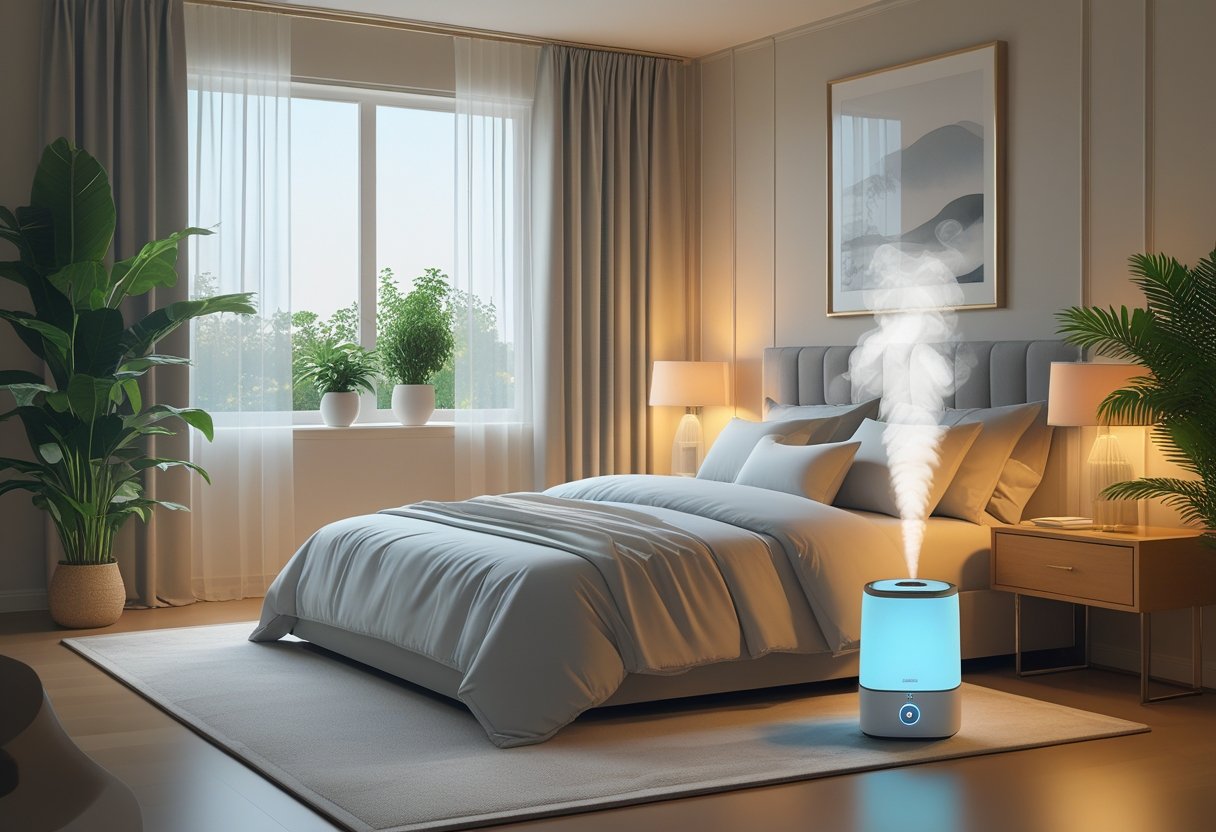
Determining and Maintaining Proper Humidity
Keeping the right level of humidity in your bedroom affects how comfortable you feel at night. Most people sleep best when the air stays between 30% and 50% humidity. If the air is too dry or too damp, there are simple tools and easy steps you can use to bring it back into balance.
Maintaining the Right Bedroom Humidity
The air in your bedroom can quietly affect how well you sleep. If it’s too dry, you might wake up with a scratchy throat. If it’s too damp, the room can feel heavy and uncomfortable. That’s why keeping indoor humidity between 30% and 50% is usually best. It helps your body rest better and makes the space feel more comfortable.
Measuring Bedroom Humidity Accurately
The air in your bedroom can quietly change how well you sleep. If it’s too dry, your throat or nose may feel irritated in the morning. If it’s too damp, the room can feel heavy and stuffy. Keeping humidity around 30% to 50% usually helps your body rest better and makes the space more comfortable.
To see how much moisture is in the air, you’ll need a hygrometer. Digital models are easier to read. Keep the device away from windows, vents, and direct sunlight so the reading is accurate. Numbers below 30% usually mean the air is too dry. Above 60% is too humid. Check at different times of day and over several days to get a real sense of your room’s humidity instead of relying on a single measurement.
Strategies to Lower High Humidity
Too much moisture can make it hard to sleep and may lead to mold or dust mites. If your hygrometer shows 60% or more, a dehumidifier is an easy fix. It pulls water from the air into a container you empty later.
Other ways to reduce humidity include running the air conditioner on a moderate setting, opening windows when it’s less humid outside, and sealing leaks. Avoid drying clothes indoors. Small spaces like closets can use charcoal or silica gel to absorb moisture. Cleaning air filters and vents helps keep airflow steady, which lowers humidity too.
Ways to Increase Low Humidity
Dry air has its own problems. Your eyes may sting, and your skin can feel itchy. A humidifier is the most reliable way to add moisture, especially in winter when heating dries the air.
If you don’t have one, you can try a bowl of water near a heater, or keep indoor plants to naturally release moisture. Breathable bedding fabrics help you feel comfortable in dry conditions. Make sure to clean your humidifier regularly to avoid bacteria or mold. Keeping humidity steady between 30% and 50% makes your bedroom healthier and easier to sleep in.
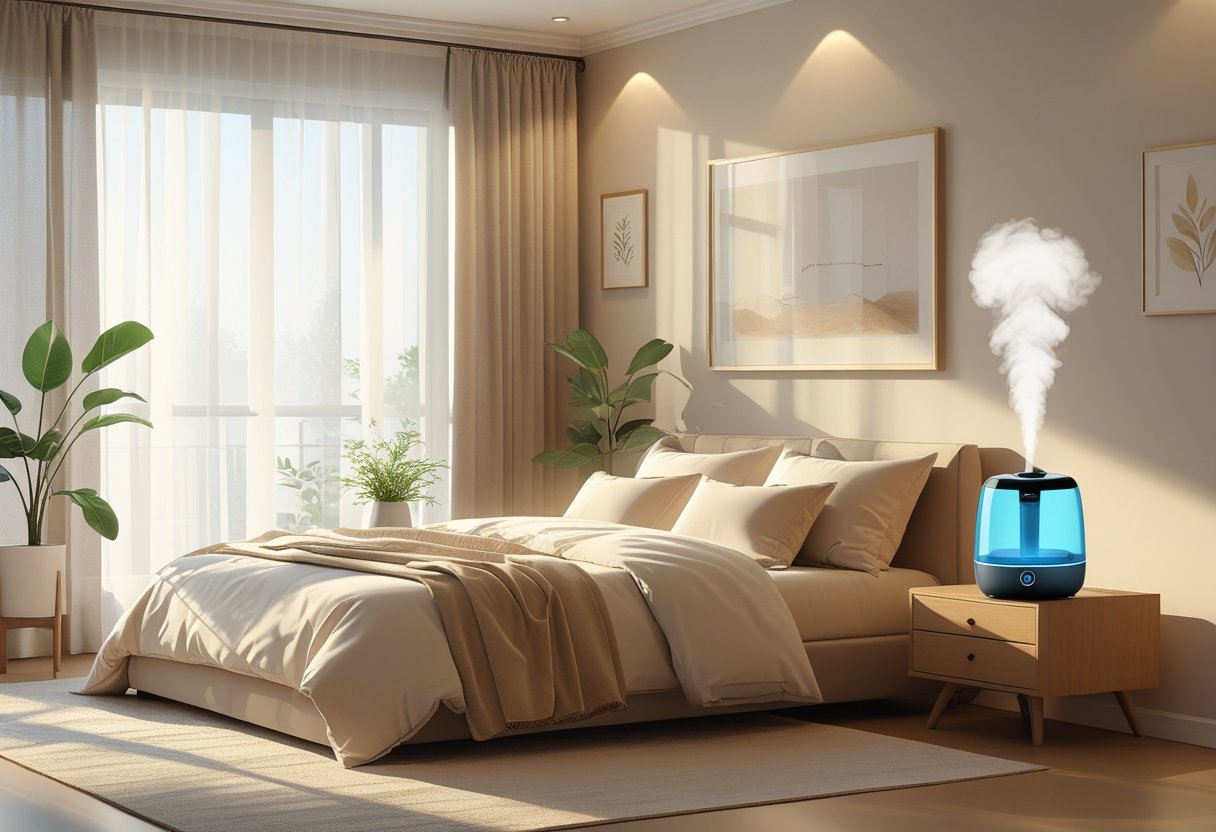
Ideal Humidity for the Entire Home
The amount of moisture in the air at home affects more than just comfort. It also impacts your skin, your breathing, and even how well you sleep. Dry air can cause itchy skin, dry eyes, or a scratchy throat. Too much moisture can lead to mold and make dust mites worse. The goal is to find a balance, which is enough humidity to feel comfortable without creating other problems.
Whole-House Humidity Recommendations
Most homes feel best when humidity stays between 30% and 50%. Below 30%, the air dries out, and your skin, eyes, or throat may suffer. Above 50%, the air holds too much water, which helps mold grow and dust mites thrive. Experts suggest keeping it under 60% to avoid these issues.
Staying in this range can make your home feel better year-round. In dry climates, a humidifier can add needed moisture. In damp areas, a dehumidifier helps the air feel lighter. Some people use a humidistat connected to the HVAC system. It adjusts the humidity automatically, keeping levels steady so sleep and comfort aren’t disrupted.
Room-by-Room Humidity Considerations
Different rooms have different needs. Kitchens and bathrooms get extra moisture from cooking and showers, so ventilation is important. Exhaust fans or small dehumidifiers prevent the air from getting too damp. Without this, mold can grow fast in these spaces.
Bedrooms need steady humidity around 40% to 50%. Too much moisture can make breathing harder or encourage mold in bedding. Too little can leave you uncomfortable at night. Keeping it balanced helps you sleep better and protects your skin. Living rooms and shared spaces can handle a wider range, but staying close to the ideal levels is still smart. Poor airflow can trap humidity, so these areas might need extra attention. Adjusting humidity room by room keeps the whole home comfortable and prevents spots that are too dry or too damp.
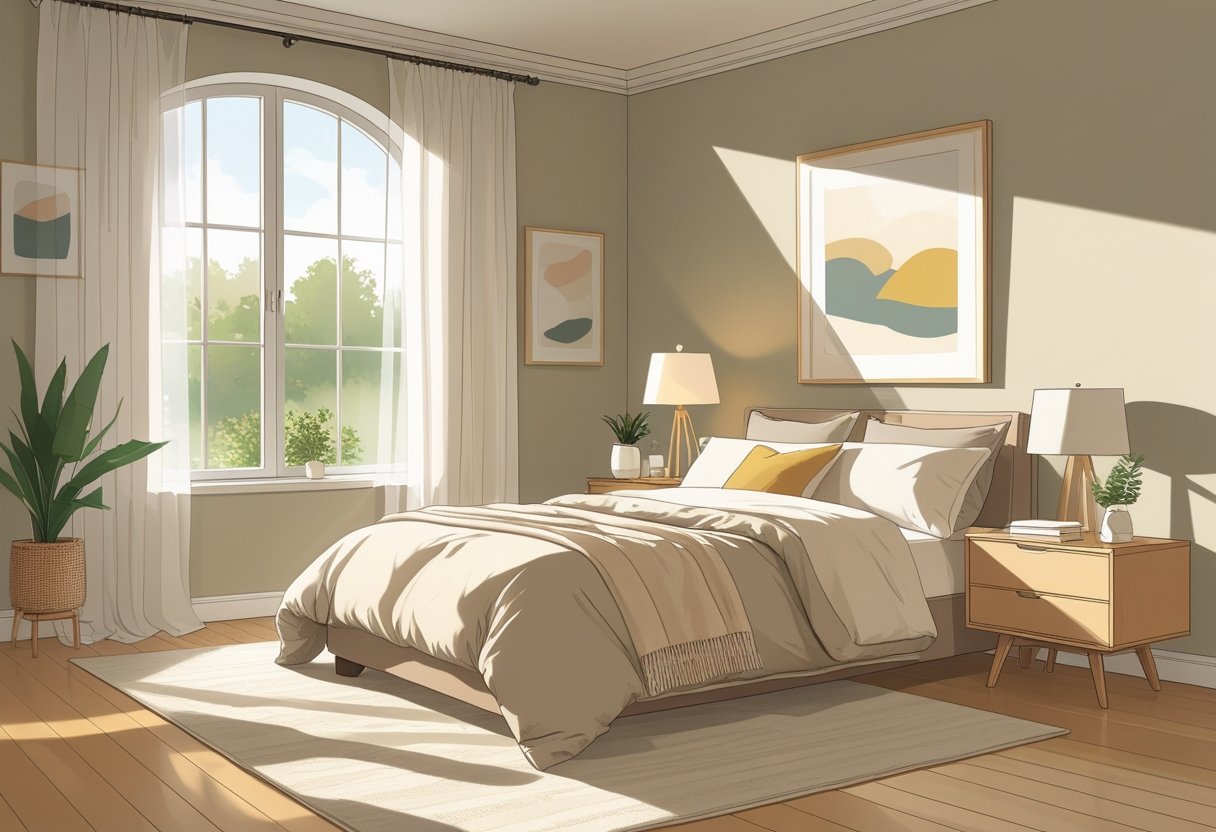
Health and Comfort Benefits of Correct Humidity
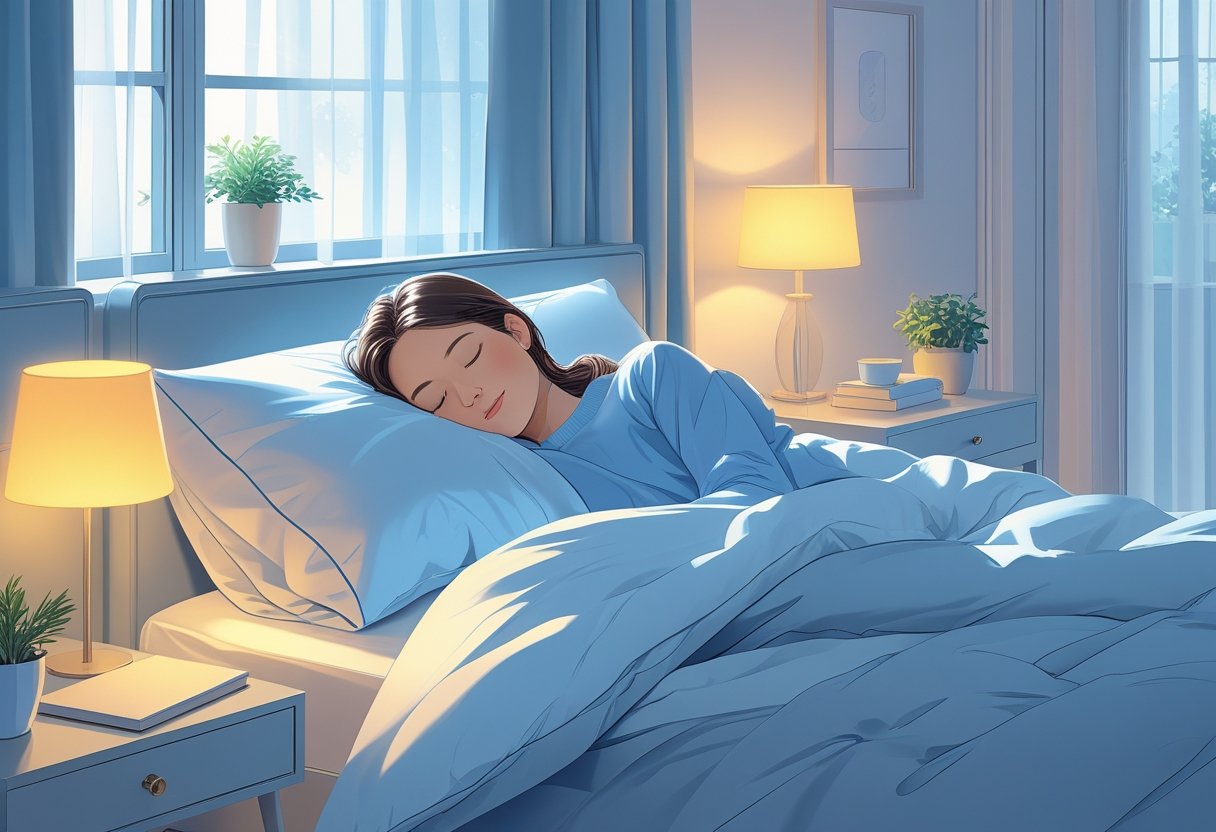
Keeping the air at the right humidity affects how comfortable you feel at home. Experts usually suggest keeping humidity between 40% and 60%. In this range, breathing is easier, skin stays hydrated, and sleep tends to feel more restful.
Reduced Risk of Allergies and Breathing Problems
Humidity affects how allergens behave inside your home. Dust mites and mold grow faster when the air is too damp. Keeping humidity below 60% can slow their growth, which means fewer triggers for people with allergies, asthma, or breathing issues. But air that’s too dry causes problems too. It can make your throat scratchy, irritate your nose, and make nighttime breathing harder. Balanced humidity helps keep airways from drying out and lowers the chance of infections. People with sensitive lungs or sinuses often notice the difference the most.
Better Skin and Sinus Comfort
Dry air doesn’t just affect breathing, it affects skin too. Skin can get itchy, flaky, or tight without enough moisture. When humidity is balanced, skin stays hydrated overnight, so mornings feel gentler on your skin. Your sinuses need moisture as well. Dry air can make them sore, blocked, or even bleed in some cases. With proper humidity, mucous membranes stay protected, making sleep more comfortable and mornings less congested.
Tools and Tips for Managing Home Humidity
Keeping indoor humidity at the right level affects how well you sleep. It also helps prevent dry skin and stops mold from growing. With the right tools and monitoring devices, it’s easier to keep things balanced.
Choosing Humidifiers and Dehumidifiers
The first step is figuring out if your air is too dry or too damp. A humidifier adds moisture when the air is dry, and a dehumidifier removes extra moisture. The best range is usually between 30% and 50%. Humidifiers come in all sizes, from small portable units to whole-house systems. When picking one, check that it’s easy to use, simple to clean, and quiet enough for daily use.
Dehumidifiers work well when the air feels heavy or damp. They help reduce mold and can make sleep more comfortable. Choosing the right size for your room is important, and the water tank needs emptying often. Many models now have a built-in humidistat to automatically keep the air in the right range.
Smart Technology and Monitoring Solutions
Modern humidistats and hygrometers give reliable readings of humidity levels. Some connect to your home’s HVAC system to maintain steady conditions. A smart humidistat lets you set a target, usually 30% to 50%, so the air doesn’t get too dry or too humid. Many smart monitors link to phone apps. They can send alerts if humidity moves out of range and show updates in real time. This makes it easier to manage your home environment and helps create a space that supports better sleep and overall comfort.
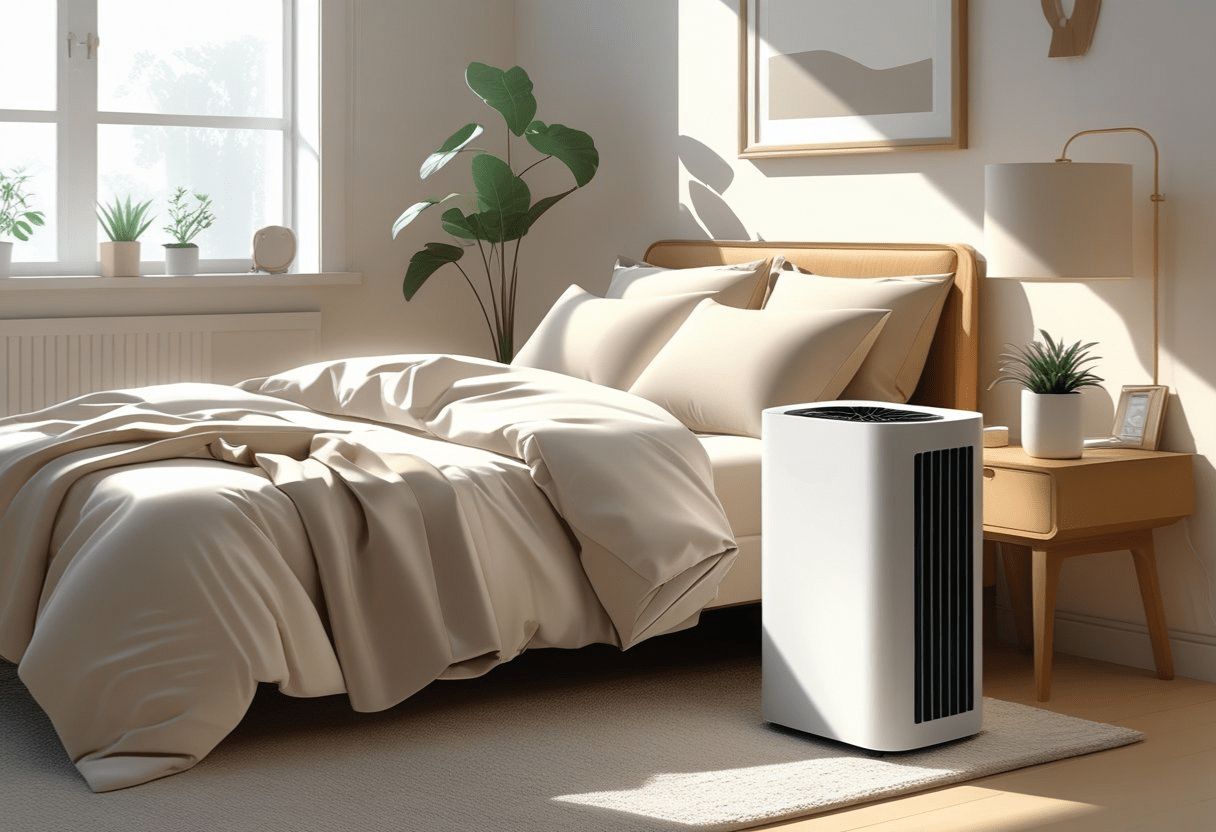
Mattresses and the Right Humidity for Better Sleep
Not all mattresses handle humidity the same way, and it can change how they feel and how well you sleep. Too much moisture can cause mold or a musty smell, while very dry air can make the materials break down faster.
Foam beds, like memory foam, tend to trap heat and moisture. This can make them feel heavy or sticky in a humid room. Latex and hybrid mattresses usually do better because air moves through them more easily, keeping them cooler. For example, the Nolah Natural 11” mattress uses natural latex that breathes well and helps control moisture, so the bed doesn’t feel damp or stuffy.
Most mattresses do best in humidity around 45–55%. This range helps prevent mold, protects the layers inside, and makes sleep healthier. You can manage humidity with breathable mattress covers, moisture-wicking sheets, or mattresses built with good airflow. Adding a washable cover can also help. Keeping the room’s humidity balanced protects the mattress and makes sleep more comfortable.
The Nolah Natural 11” also includes organic cotton and wool. Both materials pull moisture away while adding comfort and durability. Its coil system improves airflow through the mattress, which is helpful in damp climates and keeps the bed cool, comfortable, and built to last.

Frequently Asked Questions
Keeping the right humidity indoors helps in how well you sleep. It affects breathing, skin, and even how your body recovers at night.


